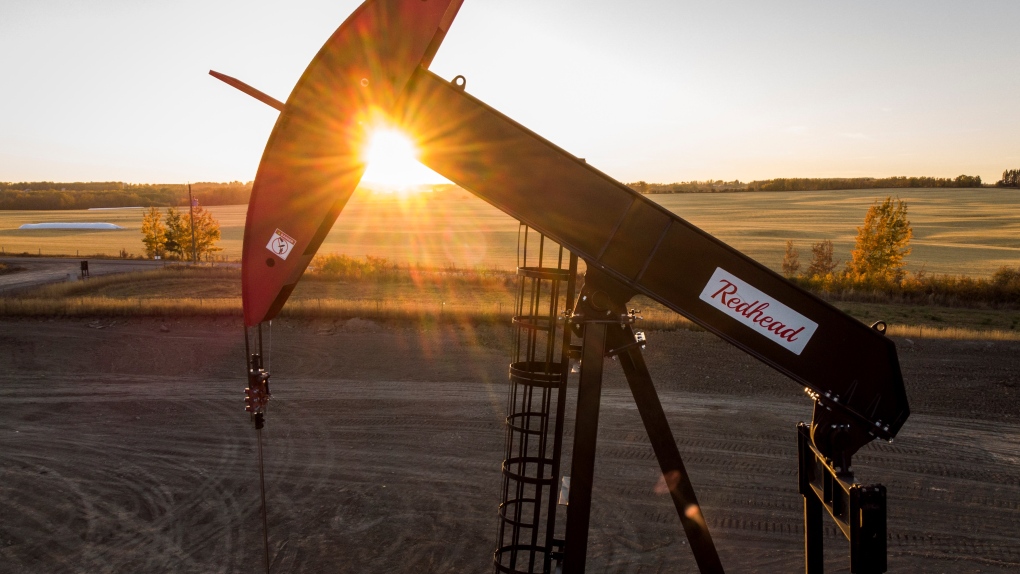
CALGARY – Canadian oil and gas companies are singing from the same songbook in the lead-up to the 2023 federal budget, and its title is the Inflation Reduction Act.
The U.S. legislation, signed into law by U.S. President Joe Biden in August of last year, has been brought up again and again in recent weeks by industry leaders jockeying for support for emissions reductions projects.
Whether folks like it or not, you’re really competing against the IRA,» said Enbridge Inc. CEO Greg Ebel during his company’s annual investor day last week. He noted that his company has operations on both sides of the border and can choose whether to invest its capital in the U.S. or Canada.
«And they (the Americans) have really put a lot of carrots on the table in terms of promoting people to invest there.»
The Inflation Reduction Act, or IRA, is the United States’ most ambitious piece of climate legislation ever. It offers about $375 billion in new and extended tax credits — for everything from renewable electricity generation to hydrogen production to sustainable jet fuel usage — to help the U.S. clean energy industry get off the ground.
The IRA has been widely praised for kick-starting the global clean energy investment race. But here in Canada, some companies have said the U.S. incentives are so attractive that it’s impossible to compete.
Last week, Calgary-based fuel producer Parkland Corp. announced it will not be going ahead with its plan to build a standalone renewable diesel complex at its refinery in Burnaby, B.C., in part because the company believes the incentives offered by the IRA give an advantage to producers south of the border.
The Pathways Alliance, an oilsands industry group, has also argued that its proposed $16.5-billion carbon capture and storage transportation line project is currently at a competitive disadvantage to U.S. carbon capture projects.
While Prime Minister Justin Trudeau’s government has already announced the creation of an investment tax credit for carbon capture projects, the IRA offers a much stronger incentive for companies in the form of a guaranteed US$85 price for each tonne of injected carbon.
That difference will mean a much faster deployment of carbon capture technology in the U.S., said Mike Belenkie, CEO of Calgary-based Advantage Energy Ltd, which — through its subsidiary Entropy Inc. — already has a commercial-scale carbon capture project up and running at its Glacier gas plant in northwest Alberta.
«An investment tax credit subsidizes upfront capital spending,» Belenkie said, adding that because of the IRA, Entropy Inc. recently made the decision to focus all of its future carbon capture growth plans in the U.S.
«A production tax credit, like the IRA offers, actually incentivizes the production of negative carbon,» Belenkie said. «It means you have to be good at actually capturing the carbon and accomplishing your goal.»
Dan Woynillowicz, a B.C.-based climate and energy policy consultant, said companies have a point when they say the U.S. is right now offering more «carrots» for emissions reduction projects.
But he added Canada has a national price on carbon, which the U.S. does not, as well as a federal clean fuel regulation and an expected mandated cap on emissions from the oil and gas sector.
«We have a lot more on the pollution pricing and regulatory side here,» Woynillowicz said, adding he believes a combination of carrots and sticks is the best approach when it comes to reaching Canada’s climate goals.
«I understand why companies would prefer to only have carrots, but governments are not responsible for the shareholder’s interest, they’re responsible for the public interest.»
The federal government, for its part, has made clear that it intends to respond to the IRA and ensure Canada isn’t left behind. Finance Minister Chrystia Freeland’s fall economic statement pledged the creation of tax credits for areas including renewable power, green hydrogen, and industrial zero-emission vehicles.
Freeland has indicated more incentives are on the way, saying there is a «historic window» right now to invest in what will be the industrial economy of the 21st century.
«To really take advantage of that opportunity at a time when the U.S. is driving very, very hard to seize that opportunity for itself, I recognize that the government will have to make some additional investments,» Freeland told reporters earlier this month.
The federal government has also indicated its intent to establish a «carbon contracts for difference» mechanism, which would give investors more confidence by essentially guaranteeing the federal Canadian carbon price.
That would ease industry and investor fears that a future federal government could freeze or cancel the carbon price, making investments in things like carbon capture and storage less risky, said Jan Gorski, oil and gas director with the Pembina Institute, a clean energy think-tank.
He added that while there’s no shortage of sectors and projects pleading for funding, the challenge for Canada will be deciding which areas it wants to lead in as the global energy transition unfolds.
«It’s important to recognize that Canada is smaller than the U.S. We’re a tenth of the economy,» Gorski said.
«We can’t compete on everything, so we need to be more strategic on the areas we choose to compete into.»